太子成道经一卷
-正

名称
太子成道经一卷
编号
P.2299
年代
待更新
材质
墨繪紙本
语言
中文
现收藏地
法国国家图书馆
尺寸
简述
待更新


有疑问?找AI助手!
AI小助手
 稍等片刻,AI正在解锁知识宝藏
稍等片刻,AI正在解锁知识宝藏

正在分析经卷中,请稍作等待…
扫码分享
 打开微信,扫一扫
打开微信,扫一扫





 *以下文本内容由DeepSeek与腾讯混元生成,仅供参考。
*以下文本内容由DeepSeek与腾讯混元生成,仅供参考。




































